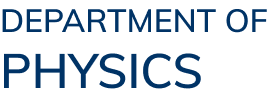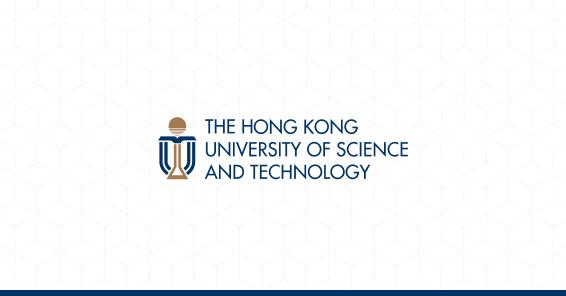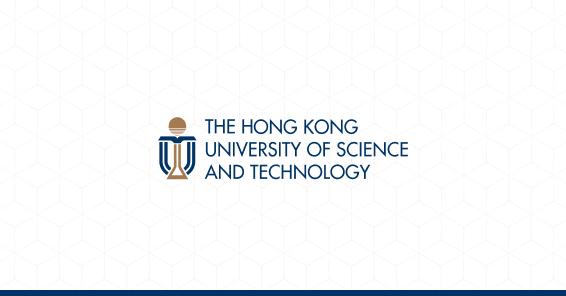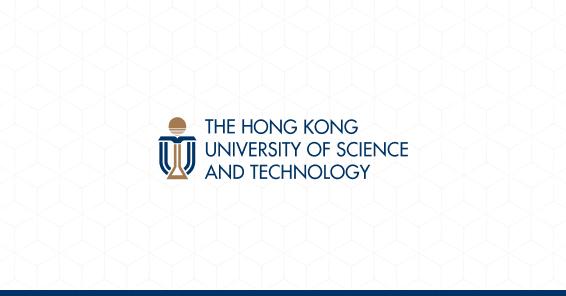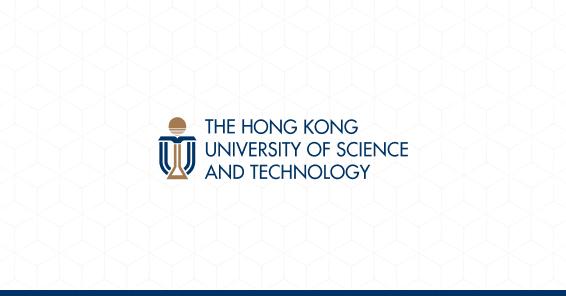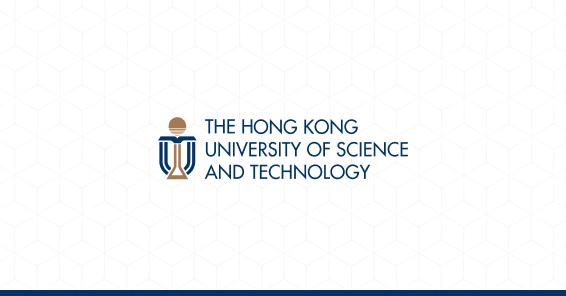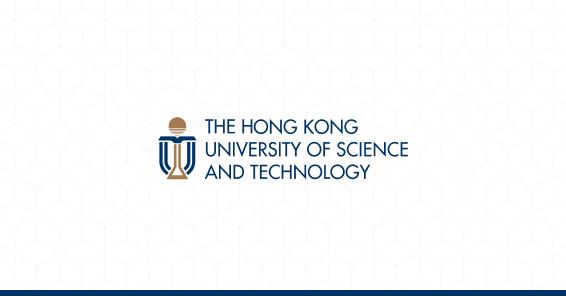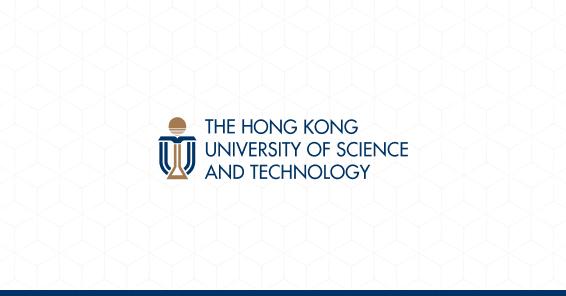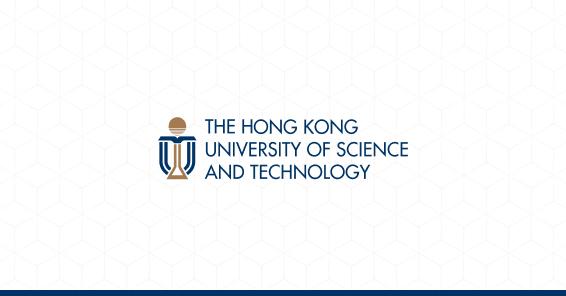News & Events
2011-08-28
The Hong Kong University of Science and Technology (HKUST)’s first Summer Institute for Secondary School Students, which offered 25 credit-bearing courses in Science, Engineering, Business and Management, Humanities and Social Science, attracted more than 670 participants from over 200 local and overseas schools. Some of them joined the Institute especially from abroad, coming from schools in the UK, USA, Canada, Japan and the Mainland. The Institute helps students develop their potentials, identify areas of interest and acquire deeper understanding of university education.
HKUST’s Summer Institute was meant to give senior secondary school students (Secondary 4 and 5, or Grades 10 and 11) a head start in their pursuit of university education and the opportunities to learn about their interests and passions at an early age. Held between mid July and mid August this year, the Summer Institute offered courses which aimed to nurture participants’ passion of learning a multitude of disciplines. Interesting courses, conducted in English, covered a variety of areas ranging from physics, chemistry, life science, engineering, marketing and finance, decision making, to history and architecture. Students also conducted experiments in university laboratories.
In addition to engaging in meaningful courses in areas of their choice and being taught by HKUST faculty, participants also took part in enrichment activities which gave them a taste of dynamic university lives. Such included ice-breaking and sports sessions to enhance students’ social skills and physical strength to achieve holistic education. Workshops had been hosted to prepare students for university admission. Meetings with HKUST’s President Tony F Chan, Secretary General of the Hong Kong Examinations Assessment Authority Dr Chong-sze Tong and other leading academics and experts presented excellent opportunities for participants to learn about the academic leaders’ visions and insights on university education.
Participants, in advance of their high-school peers, enjoyed the summer and university life in HKUST’s scenic campus. Each student could take a maximum of four courses in a summer and earn up to four university credits which, if the student joins HKUST as an undergraduate student in the future, could be counted towards his or her studies at HKUST.
Provost Prof Wei Shyy said, “HKUST is most delighted to offer our first Summer Institute for Secondary School Students with credit-bearing elective courses which prepare participants for university education in the future. Given early exposure to a wide array of knowledge during their high-school years, participants will gain inspiration regarding their future studies and development.”
“This innovative Summer Institute, with a broad range of enriching programs, has attracted enthusiastic response from local and overseas students,” said Prof Kar-yan Tam, HKUST Associate Provost and Dean of Students. “With students from different cultural backgrounds and walks of life, the Institute facilitates interactions which help participants broaden their horizons.”
HKUST’s School of Science offered five courses, covering physics, chemistry, calculus, game theory and life science. The School of Engineering provided 10 courses, encompassing robot fundamentals, electronics, the multimedia world, great structures in history, computer-aided drawing, electric vehicles, wind power for lighting, and environmental engineering. The School of Business and Management offered eight courses which covered the language of accounting, marketing, management, finance, price theory, information systems and decision-making skills. The School of Humanities and Social Science offered two courses on appreciation of western architecture, as well as modern Chinese history.
PROJECT LED BY
Prof Kar-yan Tam
Associate Provost and Dean of Students
Tel: 2358 8448
Email: kytam@ust.hk
Read more
2011-07-18
The Hong Kong team of the 42nd International Physics Olympiad (IPhO) proudly brought home 3 Gold and 2 Silver medals from Thailand. Students of the award-winning team were trainees of the Physics Enhancement Program under the Hong Kong University of Science and Technology’s (HKUST) Department of Physics.
HKUST is dedicated to discovering and nurturing elite talents to advance the science and technology development of Hong Kong. Hong Kong contestants of the IPhO have attended a focused training camp by HKUST for one year. Apart from receiving training in Physics equivalent to Bachelor’s level, they also fully mastered different practical techniques. The students were selected for possessing sound fundamental science knowledge and positive mentality to become qualified to enter the IPhO.
The Physics Enhancement Program was led by faculty members of the Department of Physics including Prof Yang Zhi-yu, Prof Wong Kwok-yee, Michael, Prof Du Shengwang and postgraduate student Ma Guan-cong. The leader of the Hong Kong Team was Prof Wong and the deputy leader was Prof Du who accompanied the team to compete at the IPhO.
Prof Ng Tai-kai, Head of HKUST’s Department of Physics said, “All contesting teams of the IPhO this year are well prepared and competition is intense. I am delighted that the Hong Kong Team made such a remarkable record in earning 3 Gold and 2 Silver medals after undergoing the Physics Enhancement Program at HKUST. The high standard of training successfully enhanced students’ knowledge in Physics and demonstrates the superior potentials of secondary school students. The outstanding performance of the Hong Kong team serves as an international recognition for HKUST’s efforts. HKUST will continue to train leaders while motivating new frontiers in science.”
The Gold medalists are F5 student Andy Loo (St. Paul’s Co-educational College), F6 student Chau Tsz-ki (CNEC Christian College) and F5 student Cheung Hil-fung, Harry (Diocesan Boys’ School). Cheung was previously awarded Best Contestant in the 7th Pan-Pearl River Delta and Chinese Elite Schools Physics Olympiad held in February 2011 and was a Gold medalist at the Asian Physics Olympiad 2011. The Silver medalists are F5 student Wong Yu-fu (S.K.H. Tsang Shiu Tim Secondary School) and F5 student Wong Yuk-fai (Shun Tak Fraternal Association Leung Kau Kui College).
The IPhO this year was held from July 10 to 18 in Bangkok, Thailand, with 400 contestants from 85 participating countries/regions. The IPhO is an annual Physics competition organized for secondary school students. Each participating team consists of five students (contestants) who are tested on both theoretical and practical knowledge in Physics.
Read more
2011-07-09
A group of physicists at the Hong Kong University of Science and Technology (HKUST) led by Prof Shengwang Du reported the direct observation of optical precursor of a single photon and proved that single photons cannot travel faster than the speed of light in vacuum. HKUST’s study reaffirms Einstein’s theory that nothing travels faster than light and closes a decade-long debate about the speed of a single photon.
Prof Shengwang Du, Assistant Professor in HKUST’s Department of Physics, and his research team have published their study in Physical Review Letters recently. Co-authors include three postgraduate students Shanchao Zhang, Jiefei Chen and Chang Liu, Chair Professors Michael M T Loy and George K L Wong. This is the fifth time in the last two years that Prof Du’s team published their optics research in Physical Review Letters, one of the most prestigious scientific journals in physics, and the second time their papers were selected as editors’ suggestion for reading. This research was also highlighted as a Physics Synopsis by American Physical Society with a title “Single photons obey the speed limits.”
Prof Du’s study demonstrates that a single photon, the fundamental quanta of light, also obeys the traffic law of the universe just like classical EM waves. Einstein claimed that the speed of light was the traffic law of the universe or in simple language, nothing can travel faster than light. HKUST’s team is the first to experimentally show that optical precursors exist at the single-photon level, and that they are the fastest part of the single-photon wave packet even in a so called ‘superluminal’ medium. “The results add to our understanding of how a single photon moves. They also confirm the upper bound on how fast information travels with light,” said Prof Du. “By showing that single photons cannot travel faster than the speed of light, our results bring a closure to the debate on the true speed of information carried by a single photon. Our findings will also likely have potential applications by giving scientists a better picture on the transmission of quantum information.” HKUST President Tony F Chan said, “We are most delighted that Prof Shengwang Du and his research group have confirmed a key feature of a fundamental law of physics, which also has important implications for communication technology. It epitomizes the mission of our university – to both produce fundamental knowledge and technological impact. As a research university with a focus on science and technology, HKUST will continue to push the limits of frontier knowledge by fostering basic as well as applied research, which is best demonstrated by this breakthrough discovery.” Discovery of superluminal propagation of optical pulses in some specific medium 10 years ago has evoked the world’s dream of time travel, but later scientists realized that it is only a visual effect where the superluminal ‘group’ velocity of many photons could not be used for transmitting any real information. Then people set their hope on single photons because in the strange quantum world nothing seems impossible — a single photon may be possible to travel faster than the speed limit in the classical world. Because of lack of experimental evidence of single photon velocity, this is also an open debate among physicists. To tackle the problem, Prof Du’s team measured the ultimate speed of a single photon with controllable waveforms. The study, which showed that single photons also obey the speed limit c, confirms Einstein’s causality; that is, an effect cannot occur before its cause. HKUST’s team used a demonstration which required not only producing single photons, but separating the optical precursor, which is the wave-like propagation at the front of an optical pulse, from the rest of the photon wave packet. To do so, Prof Du’s team generated a pair of photons, and then passed one of them through a group of laser-cooled rubidium atoms with an effect called electromagnetically induced transparency (EIT). For the first time, they successfully observed optical precursors of a single photon. The team found that, as the fastest part of a single photon, the precursor wave front always travels at the speed of light in vacuum. The main wave packet of the single photon travels no faster than the speed of light in vacuum in any dispersive medium, and can be delayed up to 500 nanoseconds in a slow light medium. Even in a superluminal medium where the group velocity (of an optical pulse peak) is faster than the speed of light in vacuum, the main part of the single photon has no possibility to travel faster than its precursor. Prof Shengwang Du joined HKUST’s Department of Physics as an Assistant Professor in 2008. He obtained BS in Electrical Engineering from Nanjing University, MS in Physics from Peking University, MS in Electrical Engineering and PhD in Physics from the University of Colorado at Boulder. He had been a Postdoctoral Scholar at Stanford University before joining HKUST.
Related articles:
Bangkok post (24/07/2011)
BBC News (26/07/2011)
Business line.com (24/07/2011)
CDR info (26/07/2011)
CNN Global (27/07/2011)
The Cosmos news (24/07/2011)
couriermail.com.au (25/07/2011)
Daily mail (25/07/2011)
Daily News Euro (25/07/2011)
Discovery News (24/07/2011)
ECT News Network (29/07/2011)
France 24 (24/07/2011)
Geek.com (26/07/2011)
Herald Sun (25/07/2011)
Intellasia.net (26/07/2011)
International Business Times (25/07/2011)
Online journal (25/07/2011)
PhysOrg.com (24/07/2011)
Popsicom (25/07/2011)
Popular Science (25/07/2011)
The Richard Dawkins Foundation News (26/07/2011)
Slashdot.com (25/07/2011)
TG news (26/07/2011)
Today AZ (26/07/2011)
Toronto Star (28/07/2011)
Vietnam news (24/07/2011)
Engadget ä¸åœ‹ç‰ˆ (01/08/2011)
騰訊網 (26/07/2011)
ç¶²æ˜“æ–°èž (28/07/2011)
æœç‹è³‡è¨Š (28/07/2011)
æ–°è¯ç¶² (28/07/2011)
新浪科技 (28/06/2011)
人民網(28/06/2011)
æ–°èžèšåˆç¶² (28/06/2011)
科å¸ç¶² (29/06/2011)
土豆網 (28/06/2011)
ä¸åœ‹æ—¥å ± (26/07/2011)
ä¸åœ‹æ–°èžç¶² (20/07/2011)
ä¸åœ‹è©•è«–æ–°èž (29/06/2011)
Read more
Prof Du’s study demonstrates that a single photon, the fundamental quanta of light, also obeys the traffic law of the universe just like classical EM waves. Einstein claimed that the speed of light was the traffic law of the universe or in simple language, nothing can travel faster than light. HKUST’s team is the first to experimentally show that optical precursors exist at the single-photon level, and that they are the fastest part of the single-photon wave packet even in a so called ‘superluminal’ medium. “The results add to our understanding of how a single photon moves. They also confirm the upper bound on how fast information travels with light,” said Prof Du. “By showing that single photons cannot travel faster than the speed of light, our results bring a closure to the debate on the true speed of information carried by a single photon. Our findings will also likely have potential applications by giving scientists a better picture on the transmission of quantum information.” HKUST President Tony F Chan said, “We are most delighted that Prof Shengwang Du and his research group have confirmed a key feature of a fundamental law of physics, which also has important implications for communication technology. It epitomizes the mission of our university – to both produce fundamental knowledge and technological impact. As a research university with a focus on science and technology, HKUST will continue to push the limits of frontier knowledge by fostering basic as well as applied research, which is best demonstrated by this breakthrough discovery.” Discovery of superluminal propagation of optical pulses in some specific medium 10 years ago has evoked the world’s dream of time travel, but later scientists realized that it is only a visual effect where the superluminal ‘group’ velocity of many photons could not be used for transmitting any real information. Then people set their hope on single photons because in the strange quantum world nothing seems impossible — a single photon may be possible to travel faster than the speed limit in the classical world. Because of lack of experimental evidence of single photon velocity, this is also an open debate among physicists. To tackle the problem, Prof Du’s team measured the ultimate speed of a single photon with controllable waveforms. The study, which showed that single photons also obey the speed limit c, confirms Einstein’s causality; that is, an effect cannot occur before its cause. HKUST’s team used a demonstration which required not only producing single photons, but separating the optical precursor, which is the wave-like propagation at the front of an optical pulse, from the rest of the photon wave packet. To do so, Prof Du’s team generated a pair of photons, and then passed one of them through a group of laser-cooled rubidium atoms with an effect called electromagnetically induced transparency (EIT). For the first time, they successfully observed optical precursors of a single photon. The team found that, as the fastest part of a single photon, the precursor wave front always travels at the speed of light in vacuum. The main wave packet of the single photon travels no faster than the speed of light in vacuum in any dispersive medium, and can be delayed up to 500 nanoseconds in a slow light medium. Even in a superluminal medium where the group velocity (of an optical pulse peak) is faster than the speed of light in vacuum, the main part of the single photon has no possibility to travel faster than its precursor. Prof Shengwang Du joined HKUST’s Department of Physics as an Assistant Professor in 2008. He obtained BS in Electrical Engineering from Nanjing University, MS in Physics from Peking University, MS in Electrical Engineering and PhD in Physics from the University of Colorado at Boulder. He had been a Postdoctoral Scholar at Stanford University before joining HKUST.
Related articles:
Bangkok post (24/07/2011)
BBC News (26/07/2011)
Business line.com (24/07/2011)
CDR info (26/07/2011)
CNN Global (27/07/2011)
The Cosmos news (24/07/2011)
couriermail.com.au (25/07/2011)
Daily mail (25/07/2011)
Daily News Euro (25/07/2011)
Discovery News (24/07/2011)
ECT News Network (29/07/2011)
France 24 (24/07/2011)
Geek.com (26/07/2011)
Herald Sun (25/07/2011)
Intellasia.net (26/07/2011)
International Business Times (25/07/2011)
Online journal (25/07/2011)
PhysOrg.com (24/07/2011)
Popsicom (25/07/2011)
Popular Science (25/07/2011)
The Richard Dawkins Foundation News (26/07/2011)
Slashdot.com (25/07/2011)
TG news (26/07/2011)
Today AZ (26/07/2011)
Toronto Star (28/07/2011)
Vietnam news (24/07/2011)
Engadget ä¸åœ‹ç‰ˆ (01/08/2011)
騰訊網 (26/07/2011)
ç¶²æ˜“æ–°èž (28/07/2011)
æœç‹è³‡è¨Š (28/07/2011)
æ–°è¯ç¶² (28/07/2011)
新浪科技 (28/06/2011)
人民網(28/06/2011)
æ–°èžèšåˆç¶² (28/06/2011)
科å¸ç¶² (29/06/2011)
土豆網 (28/06/2011)
ä¸åœ‹æ—¥å ± (26/07/2011)
ä¸åœ‹æ–°èžç¶² (20/07/2011)
ä¸åœ‹è©•è«–æ–°èž (29/06/2011)
Read more
2011-05-31
The Institute for Advanced Study (IAS) of the Hong Kong University of Science and Technology (HKUST) holds a three-day “Conference on Cosmology since Einstein” starting from 30 May 2011 at which world top scientists including a Nobel Laureate explore the most up-to-date developments and challenges of cosmology.
This conference has brought together 24 top cosmologists and relativists from China, Japan, France, Switzerland, the U.K. and U.S to share as speakers their insights and latest research findings on cosmological theories. Distinguished speakers like Prof David Gross, 2004 Nobel Laureate in Physics and Kavli Institute for Theoretical Physics, University of California, Santa Barbara, spoke on “Cosmological Challenges – The View of a String Theorist”.
Human’s view on the origin of the universe changed drastically when Albert Einstein’s theory of general relativity provided a totally new understanding of space, time and gravity. The mystery of our universe remains to be unfolded. This conference aims to unleash the latest scientific developments on the issue of the expanding universe and its associated puzzles. The latest topics on inflationary universe, string theory, dark matter, dark energy, etc will be covered.
Addressing at Prof Tye’s inaugural lecture, HKUST President Tony F Chan says, “We, at HKUST, position ourselves in the forefront of the technological advancement. The IAS is a key initiative outlined in the HKUST Strategic Plan with a mission to act as an intellectual platform for excellence gathering great minds and to set high standards for academic disciplines. As a distinguished theoretical physicist and cosmologist, Prof Tye will bring to this post wealth of experience in the world’s leading scientific bodies. We are confident that he will take IAS to reach new heights.”
Prof Henry Tye, IAS Director, HKUST, gave his inaugural lecture entitled “Does the universe have a beginning?”. “In the past decades, cosmology has moved from a speculative field to a precision science. This is the golden age of cosmology. For the coming 10 years or so, a lot of data will pour in. IAS’s goal is to explore the frontiers of knowledge. The Conference on Cosmology since Einstein is a prime example in this effort,” Prof Henry Tye added.
The Institute for Advanced Study of HKUST aims to foster collaboration across disciplines and institutions to foster innovation and scientific breakthroughs in Hong Kong and the Greater China region. Since its inauguration, it has organized over 170 distinguished lectures, seminars and workshops with internationally-acclaimed speakers including chemist Prof Harold Kroto, economist Prof James Mirrlees, physicists Prof C N Yang (1957 Nobel Laureate in Physics), Prof David Gross and Prof Douglas Osheroff and many others. To date 24 world-renowned scholars have joined the Institute as Visiting Members.
The Conference is one of the core programs of “Einstein in Hong Kong” as well as a satellite program in celebration of HKUST’s 20th anniversary. IAS joins hand with swissnex China to organize this conference to promote the exchange of the latest knowledge and development of cosmology. The event was supported by the Croucher Foundation, K.C. Wong Education Foundation, Lee Hysan Foundation and HKUST Department of Physics.
Detailed information of the conference is available at: http://ias.ust.hk/workshop/cosmology/2011/
Read more
2011-04-06
The Hong Kong University of Science and Technology (HKUST) will launch its first Summer Institute to provide to Secondary 4 and 5 (Grades 10 and 11) students with 27 credit-bearing courses offered by its four Schools – Science, Engineering, Business and Management, as well as Humanities and Social Science.
Prof Kar Yan Tam, HKUST Associate Provost and Dean of Students, said, “Apart from providing quality education to undergraduates and postgraduate students, HKUST is also keen on providing senior secondary school students with interesting, useful and easy-to-comprehend courses in various subjects. The students will also have an early experience of university life and even get a taste of how university professors deliver lectures.”
The School of Science will offer 5 courses, covering physics, chemistry, calculus, game theory and the appreciation of nature. The School of Engineering will provide 12 courses, encompassing robot fundamentals, electronics, the multimedia world, great structures in history, computer-aided drawing, electric vehicles, wind power for lighting, and environmental engineering.
The School of Business and Management will offer 8 courses covering language of accounting, marketing, management, finance, price theory, information systems and decision-making skills. Meanwhile, the School of Humanities and Social Science will provide 2 courses – on appreciation of western architecture, as well as violence, sins and demythologized heroes in modern Chinese history.
The HKUST Summer Institute will comprise two modules – from 18 to 29 July 2011, and from 1 to 12 August 2011, respectively. Morning classes will be from 10 am to 12 noon, while afternoon classes will be from 2 pm to 4 pm. In other words, a student can take a maximum of 4 courses during a summer, and these courses can be selected from different Schools.
Each course will carry one credit. If a student joins HKUST, he / she is entitled to use his / her credit(s) for partial fulfillment of his / her credit requirement for graduation.
Read more
2011-03-31
The Hong Kong University of Science and Technology (HKUST) joins hands with the Swiss Consulate, swissnex China, the Hong Kong Science Museum and the Education Bureau to launch the “Einstein in Hong Kong” program to offer to the people of Hong Kong a series of scientific and artistic events centered on the legendary Albert Einstein – one of the greatest scientists in the twentieth century. Prof Einstein had visited Hong Kong twice in his life – in 1922 just before he received the Nobel Prize in Physics, and also in the following year. There will be an exhibition, an academic conference, public lectures, music workshops and concerts, day camps for secondary students, and a writing workshop and competition, to be held over a five-month period from April to August this year.
A kick-off ceremony was held today at the HKUST, officiated by Consul General of Switzerland Mrs Rita Hmmerli-Weschke, HKUST President Tony F Chan, swissnex China Director Dr Flavia Schlegel, Hong Kong Science Museum Curator of Exhibit Ms Karen Sit, and Principal Assistant Secretary for Curriculum Development of the Education Bureau Dr Cheung Kwok-wah.
Albert Einstein (1879-1955) Exhibition
The exhibition “Albert Einstein (1879-1955)” was originated from the Historical Museum of Bern in Switzerland in 2005 to commemorate the centenary of the Theory of Relativity and the 60th anniversary of diplomatic relations between China and Switzerland. This exhibition, showcasing over 200 objects and documents about Einstein’s life and revolutionary theories, will be staged at the Hong Kong Science Museum throughout the April to August period this year, during which a series of six public lectures featuring Nobel Laureate in Chemistry 1991 Prof Richard Ernst and other distinguished scholars will be held.
Date: 18 April to 31 August 2011
Venue: Special Exhibition Hall, Hong Kong Science Museum
Cosmology since Einstein
The Institute for Advanced Study at HKUST will host the “Cosmology since Einstein” conference with 24 distinguished cosmologists and relativists from six countries worldwide sharing their views on the new frontiers in cosmology.
Date: 30 May to 1 June 2011
Venue: Mr and Mrs Lee Siu Lun Lecture Theater (LT-K), HKUST
Intimacy of Creativity
On the artistic front, the HKUST School of Humanities and Social Science will conduct music composition workshops and stage concerts on the theme of “arts and science” under the stewardship of YK Pao Distinguished Visiting Professor Bright Sheng, an internationally acclaimed composer, pianist and conductor. Entitled “The Intimacy of Creativity – the Bright Sheng Partnership: Composers Meet Performers in Hong Kong”, this innovative endeavor will bring in a host of composers and musicians.
Date: 25 April to 8 May 2011
Venues:
(1) Tsang Shiu Tim Art Hall, HKUST
(2) Concert Hall, Hong Kong Academy for Performing Arts
Einstein@HKUST
The HKUST School of Science will stage an array of games, a book exhibition and two public talks about the scientific contributions of Einstein for the society as well as his life values and principles to enable students, teachers and members of the public to learn about Einstein beyond the realm of science. Invited speakers include renowned actor, director, writer and producer Mr Cheung Kin Ting, Chair Professor of Physics Prof Che Ting Chan and Professor of Physics of University of Wisconsin-Madison and Fellow of the HKUST Institute for Advanced Study Prof Gary Shiu.
To add a gastronomic dimension to the exploration of Einstein’s affections, a dinner serving Einstein’s favorite dishes will be held on HKUST campus where Einstein’s diet will be introduced.
The School of Science will also hold science and mathematics day camps for local students.
Date: 7 May 2011
Venue: HKUST
Letters to Einstein
The HKUST School of Science will collaborate with the Education Bureau in organizing a writing competition entitled “Letters to Einstein”, to encourage students to reflect on what they can learn from Einstein.
Date: 7 May 2011
Venue: HKUST
Einstein in Love
Dennis Overbye, author of Einstein in Love: A Scientific Romance and renowned science correspondent for the New York Times, will talk about Einstein’s youth and romantic life and how they shape his influential discoveries. The talk will also feature Dr Li Siu-leung, Associate Professor and Director of Master of Cultural Studies Program at Lingnan University, who will discuss Einstein as an iconic figure.
Date: 20 April 2011
Venue: HKUST
About Einstein’s Relationship with Hong Kong
In 1922, Prof and Mrs Einstein boarded the Japanese steamer, Kitano Maru, and arrived in Hong Kong on 9 November, en route to Japan, during which he visited the Peak and the Repulse Bay Hotel. Prof Einstein noted that “the scenery [of Hong Kong] reminded him very much of Switzerland”. It was between the stop-offs between Hong Kong and Shanghai that Prof Einstein received the good news that he was awarded the Nobel Prize in Physics 1921 by radio telegraph.
In returning to Europe from Japan, Prof Einstein paid his second visit to Hong Kong on 5 January 1923 and attended a welcome reception at the Jewish Community Centre, then known as the Jewish Recreation Club.
Read more
2011-03-09
香 港 科 技 大 å¸ ( 科 大 ) 與 香 港 資 優 æ•™ 育 å¸ é™¢ åˆ è¾¦ çš„ 「 物 ç† åŸ¹ 訓 課 程 〠培 訓 了 57 ä½ ä¸ å¸ ç”Ÿ åƒ èˆ‡ 「 第 七 屆 æ³› ç 三 角 物 ç† å¥§ æž— 匹 å…‹ 競 è³½ 暨 ä¸ è¯ å æ ¡ é‚€ è«‹ è³½ 〠, å…± 奪 å– 16 個 一 ç‰ çŽ ã€ 19 個 二 ç‰ çŽ åŠ 16 個 三 ç‰ çŽ çš„ ä½³ 績 , 創 下 自 2005 å¹´ 香 港 代 表 隊 åƒ èˆ‡ 競 è³½ 以 來 最 ä½³ çš„ æ•´ é«” æˆ ç¸¾ 。
å°± 讀 æ‹” èƒ ç”· 書 院 ä¸ äº” çš„ å¼µ 曉 風 åŒ å¸ ï¼Œ æ›´ æ–¼ å…¨ å ´ 358 å åƒ è³½ 者 ä¸ æ¦® 膺 總 å† è» ã€‚ 香 港 物 ç† å¥§ æž— 匹 å…‹ 委 å“¡ 會 主 å¸ ã€ ç§‘ 大 物 ç† å¸ ç³» 楊 å¿— 宇 æ•™ 授 表 示 : 「 今 å¹´ çš„ 競 è³½ é¡Œ ç›® 較 去 å¹´ å›° 難 , 但 å¼µ 曉 風 åŒ å¸ ä» å– å¾—94分 çš„ ä½³ 績 , 較 去 å¹´ 最 高 æˆ ç¸¾ é‚„ è¦ é«˜ , 實 難 能 å¯ è²´ 。 ã€
å¼µ 曉 風 åŒ å¸ åŠ æ–¼ 香 港 åƒ åŠ è€… ä¸ æŽ’ å 第 二 〠全 å ´ åƒ åŠ è€… ä¸ æŽ’ å 第 å… çš„ è– å…¬ 會 曾 肇 æ·» ä¸ å¸ é»ƒ 裕 富 åŒ å¸ å‡ æ–¼ 2008 å¹´ é–‹ 始 åƒ èˆ‡ ç”± 科 大 ç† å¸ é™¢ 舉 辦 çš„ 「 數 ç† å„ª æ‰ å¢ž 益 課 程 〠。
表 ç¾ å‡º 眾 çš„ 香 港 åŒ å¸ é‚„ 有 è¯ è‹± ä¸ å¸ çš„ èš å®¶ 朗 åŒ å¸ ã€ é¦™ 港 é“ æ•™ è¯ åˆ æœƒ 鄧 顯 ç´€ 念 ä¸ å¸ é¾ å‰ é´» åŒ å¸ åŠ ä¿ è‰¯ å±€ 第 一 å¼µ æ°¸ æ…¶ ä¸ å¸ æ¢ å…† å› åŒ å¸ ã€‚
科 大 ç† å¸ é™¢ 副 院 é•· åŠ ç‰© ç† ç³» ç³» 主 ä»» å³ å¤§ çª æ•™ 授 說 : 「 科 大 ç† å¸ é™¢ 除 æ ä¾› 本 科 生 å’Œ ç ” 究 生 æ•™ 育 之 外 , 多 å¹´ 來 亦 一 ç›´ 致 力 æ–¼ 為 資 優 çš„ ä¸ å¸ åŒ å¸ æ ä¾› 培 訓 。 我 們 最 è¿‘ æˆ ç«‹ 了 資 優 æ•™ 育 發 展 ä¸ å¿ƒ , 為 有 æ½› 能 çš„ ä¸ å° å¸ ç”Ÿ æ ä¾› 有 ç³» çµ± çš„ æ ¡ 外 課 程 , 鼓 勵 åŒ å¸ å®š ç«‹ ç›® 標 , 按 ç…§ 個 人 å¼· é … åŠ èˆˆ 趣 , 自 ç”± å ± 讀 課 程 , 以 æ“´ é—Š å…¶ 知 è˜ é ˜ 域 åŠ åŠ é€Ÿ å…¶ å¸ ç¿’ , 令 å…¶ æ½› 能 å¾— 以 盡 é‡ ç™¼ æ® ã€‚ 課 程 æ›´ 滲 å…¥ 情 æ„ æ•™ 育 , 幫 助 資 優 åŒ å¸ é¢ å° å€‹ 人 發 展 è·¯ 途 上 çš„ 挑 戰 , 並 建 ç«‹ æ£ ç¢º çš„ 人 生 ç›® 標 。 ã€
「 第 七 屆 æ³› ç 三 角 物 ç† å¥§ æž— 匹 å…‹ 競 è³½ 暨 ä¸ è¯ å æ ¡ é‚€ è«‹ è³½ 〠於 今 å¹´ 2 月 10 æ—¥ æ–¼ 香 港 科 技 大 å¸ ã€ æ¾³ é–€ 大 å¸ åŠ æ·± 圳 ä¸ å¸ ä¸‰ 地 åŒ æ™‚ 舉 è¡Œ , å…± 有 211 å å…§ 地 ä¸ å¸ ç”Ÿ , 57 å 香 港 ä¸ å¸ ç”Ÿ åŠ 90 å æ¾³ é–€ ä¸ å¸ ç”Ÿ åƒ èˆ‡ 競 è³½ 。 åƒ åŠ è€… 來 自 ä¸ æ¸¯ æ¾³ 三 地 å…± 40 多 所 å¸ æ ¡ , 包 括 å…§ 地 è‘— å å¸ æ ¡ 如 北 京 å›› ä¸ ã€ ä¸Š æµ· æ ¼ 致 ä¸ å¸ ã€ å— äº¬ 師 大 附 ä¸ åŠ è¯ å— å¸« 大 附 ä¸ ã€‚
是 é … 競 è³½ ç”± 香 港 資 優 æ•™ 育 å¸ é™¢ 〠香 港 物 ç† å¥§ æž— 匹 å…‹ 委 å“¡ 會 與 ä¸ åœ‹ æ•™ 育 å¸ æœƒ 物 ç† æ•™ å¸ å°ˆ æ¥ å§” å“¡ 會 åˆ è¾¦ , æ—¨ 在 推 廣 物 ç† æ•™ 育 , 並 為 大 ä¸ è¯ å€ å¹´ é’ ç‰© ç† ç²¾ 英 æ ä¾› 挑 戰 性 çš„ å¸ ç¿’ æ©Ÿ 會 。
Read more
2011-01-27
The Hong Kong University of Science and Technology (HKUST) today presented Long Service Awards to over 250 faculty and staff members who have served the University for 20 years or are serving the University for the 20th year. This is the first of a series of celebrations on HKUST’s 20th Anniversary this year.
The theme of HKUST’s 20th Anniversary celebrations is “Our Miracle Continues”. As HKUST’s achievements in the past 20 years are regarded as a miracle, and the long serving staff are what made this miracle possible, HKUST decided to make the Long Service Award the first 20th Anniversary event.
Officiating at the ceremony, HKUST President Tony F Chan expressed his appreciation for their many years of dedication to the University. He said, “Today we honor over 250 of our loyal and long-serving employees, among whom are faculty members , who for the first time, are being so recognized since the Long Service Award began. Without you, without people like you, we wouldn’t be where we are today.
“Now, as the university sails into its third decade, we have a bigger dream to chase . Our university, our city and our country need us to sail on strong and free, crossing and conquering new frontiers, with our old magic spirit,” he said.
At the ceremony, Prof Michael Altman of the Department of Physics, expressed his feelings towards the University. “Three words sum up my feelings towards HKUST in the past 20 years – Gratitude, Relief and Pleasure,” he said. “I am grateful to the University for giving me immense opportunities and a conducive environment for my research developments. Joining a new university in a new territory carries inherent risks and sacrifices, but I am relieved that my investments have paid off and my adventure has reaped the desired outcome. Finally, it has been a great pleasure to work with my academic and non-academic colleagues, and also to mentor generations of innovative and enterprising students.”
Mrs Pandora Yuen, Deputy Director of the Student Affairs Office, talked about the HKUST spirit in both the staff and the students. “Just before we moved into our Clear Water Bay campus, we had a relatively small office in Tsim Sha Tsui, and everybody knew everybody else well and we worked as a closely-knit team to ensure the smooth opening of the University in Fall 1991. Then when the first student halls were opened, the facilities were barely adequate. However the students were very understanding and were willing to solve a lot of the problems themselves. In the later years I was particularly impressed by the selflessness, bravery and team spirit of colleagues and students in combating SARS in 2003.”
HKUST introduced the Long Service Award to recognize the unfailing contribution of the staff since the University’s early days, and to further boost their sense of belonging.
Read more
2010-10-14
32 Doctoral Students from 11 Nationalities Admitted to HKUST through Hong Kong PhD Fellowship Scheme
The Hong Kong University of Science and Technology (HKUST) has admitted 32 doctoral students from 11 nationalities across 4 continents to pursue PhD programs under the Hong Kong PhD Fellowship Scheme (HKPFS) offered by the Research Grants Council (RGC).
This is the first year HKPFS is introduced and among the 106 students awarded scholarships 32 has opted to study at HKUST – the largest number among local tertiary institutions.
“We are delighted that as much as one-third of the Fellowship awardees coming to Hong Kong have opted for HKUST. This testifies to the well-deserved reputation that our University enjoys in global academia, particularly in our strength in research. We are fully committed to providing these students with a quality education that will benefit them for life,” said HKUST Provost Prof Wei Shyy.
The students admitted to HKUST this year represent 11 nationalities – namely China, Korea, Malaysia, Singapore, India, Iran, Greece, the Czech Republic, Germany, Nigeria and the USA.
8 of them are in the Department of Electronic and Computer Engineering, 6 in Computer Science and Engineering, 5 in Physics, while the others are in other Science and Engineering disciplines, apart from one who is in Humanities.
Mr Adetoyese Olajire Oyedun, from Nigeria, is pursuing research in bio-diesel and mixed waste treatment. “I have a keen interest in this area because with the continued growth in global population and the consequential increase in the demand for fuel and waste management, the issues are causing grave concern. I trust that my research work at HKUST will enable me to make contribution to humankind,” he said.
Mr Xiaolong Chen, from Mainland China, is pursuing research into nano science. He noted, “Nano science and technology is a cutting edge discipline, and one of the renowned areas of excellence at HKUST. It is also a research area that will bring fundamental improvements to the life of people all over the world. I do hope that my research will contribute towards advance in this discipline.”
More information about applying for admission to HKUST through the Hong Kong PhD Fellowship Scheme is available through this link: http://pg.ust.hk/hkpfs/web/index.php
Read more
